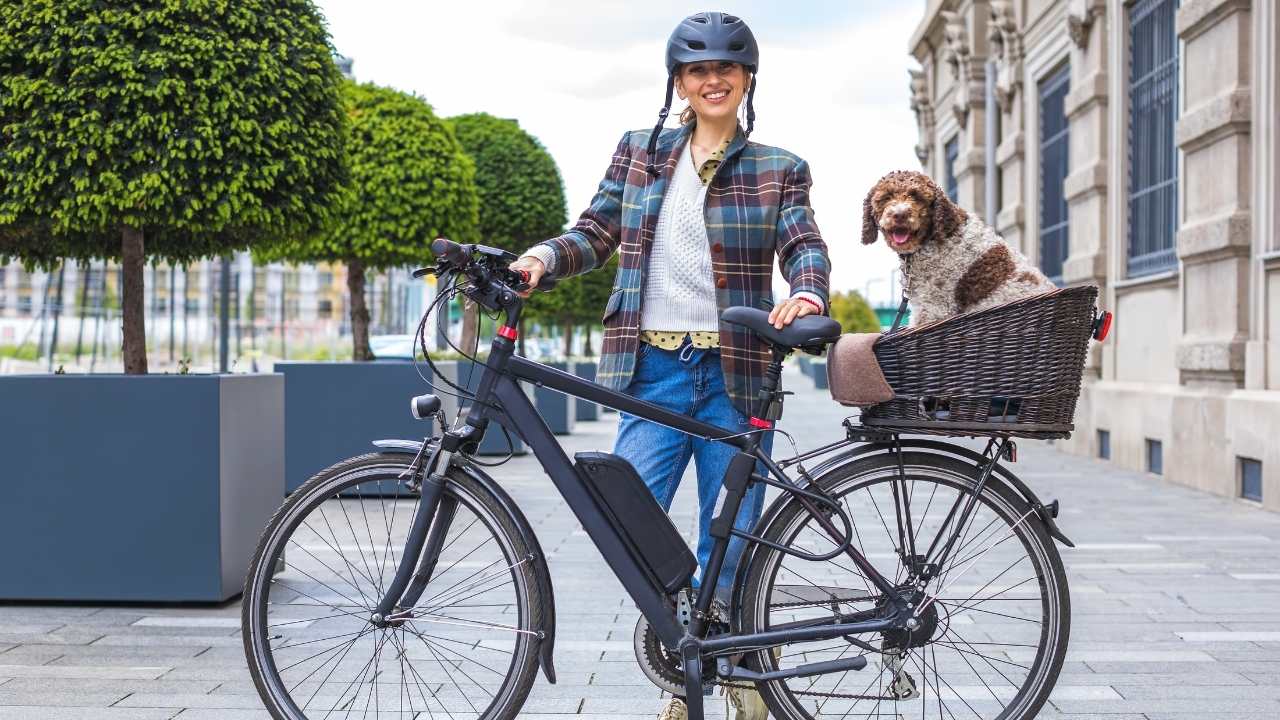
How Far Can an Electric Bike Go on a Full Charge?

An electric bike can travel varying distances on a full charge, influenced by rider weight, terrain, speed, tire pressure, and pedal assistance levels. Factors like battery capacity, estimating range, higher capacity batteries, motor efficiency, and energy consumption play significant roles. Terrain and riding conditions impact range due to topography, wind resistance, steep hills, rough terrains, temperature, and weather. To maximize range, maintain ideal tire pressure, practice smooth acceleration/braking, use lower assist levels, and plan efficient routes. Real-world examples and case studies offer practical insights into enhancing electric bike range potential. Uncover valuable tips and strategies to optimize your electric bike's full charge capabilities.
Factors Affecting Electric Bike Range
Various factors contribute to the range an electric bike can achieve on a full charge. The weight of the rider, terrain, speed, tire pressure, wind resistance, and level of pedal assistance all play an important role.
Heavier riders may experience reduced range due to increased energy consumption. Riding uphill requires more power, draining the battery faster than on flat surfaces. Maintaining an efficient speed can help conserve energy and extend the bike's range. Properly inflated tires reduce rolling resistance, improving efficiency. Riding against strong winds can also impact the distance an electric bike can cover on a single charge.
Battery Capacity and Range Estimation
Examining battery capacity and estimating range are crucial aspects of understanding the performance of electric bikes. The battery capacity of an electric bike is a critical factor in determining how far it can go on a full charge. Higher capacity batteries generally provide a longer range, offering riders more flexibility in their journeys.
Estimating the range of an electric bike involves considering factors such as the battery capacity, motor efficiency, rider weight, and average speed. Riders should have a clear understanding of their bike's range to guarantee they do not run out of power mid-ride. By monitoring battery levels and being mindful of energy consumption, riders can plan their trips effectively and enjoy a safe and worry-free riding experience.
Terrain and Riding Conditions Impact
The topography and environmental factors significantly influence the performance and range of an electric bike during rides. Riding on flat surfaces with minimal wind resistance allows the electric bike to maximize its efficiency and range. In contrast, tackling steep hills or rough terrains can drain the battery more quickly and reduce the overall distance the bike can cover on a single charge.

Additionally, factors like temperature and weather conditions can impact the battery performance, with extreme heat or cold affecting the overall range. To guarantee a safe and efficient ride, it's crucial for riders to take into account the terrain and environmental conditions when planning their electric bike journeys. Being mindful of these factors can help riders manage their battery usage effectively and enjoy longer rides without any unexpected interruptions.
Maximizing Electric Bike Range Tips
When aiming to extend the range of an electric bike, riders can implement strategic techniques to optimize battery efficiency and overall performance. To maximize the electric bike range and guarantee a safe journey, consider the following tips:
Real-World Examples and Case Studies
To gain practical insights into maximizing electric bike range, examining real-world examples and case studies can provide valuable lessons for riders looking to optimize their battery efficiency and extend their journey distance.
In a case study conducted with electric bike commuters in urban settings, riders who maintained a steady speed and avoided sudden accelerations were able to significantly prolong their battery life and travel distance. Additionally, proper tire inflation, regular battery maintenance, and avoiding excessive weight on the bike were found to be key factors in extending range.
Frequently Asked Questions
Can Electric Bikes Be Charged Using Solar Power?
Electric bikes can indeed be charged using solar power, providing an eco-friendly and sustainable energy source. By harnessing the power of the sun, riders can reduce their carbon footprint and enjoy a more environmentally conscious mode of transportation.
Are There Any Government Incentives for Electric Bike Owners?
Government incentives for electric bike owners vary by region, providing benefits such as tax credits, rebates, or subsidies to promote eco-friendly transportation. These incentives aim to encourage the adoption of electric bikes, contributing to environmental sustainability.
How Long Does It Take to Fully Charge an Electric Bike?
Charging an electric bike fully typically takes between 3 to 6 hours, depending on the battery capacity and charger specifications. Ensuring a full charge allows for peak performance and longer rides. Regularly check the manufacturer's guidelines for charging instructions.

Can Electric Bikes Be Ridden in Rainy or Snowy Conditions?
Electric bikes can be ridden in rainy or snowy conditions, but caution is recommended. Wet surfaces may affect traction, and visibility might be reduced. Make sure tires have good tread, brakes are functioning well, and wear appropriate gear for safety.
Are There Any Special Maintenance Requirements for Electric Bike Batteries?
When considering electric bike batteries, it is essential to adhere to specific maintenance requirements for best performance and longevity. Regularly check and charge the battery, store it properly, avoid extreme temperatures, and follow manufacturer guidelines to guarantee safety and efficiency.